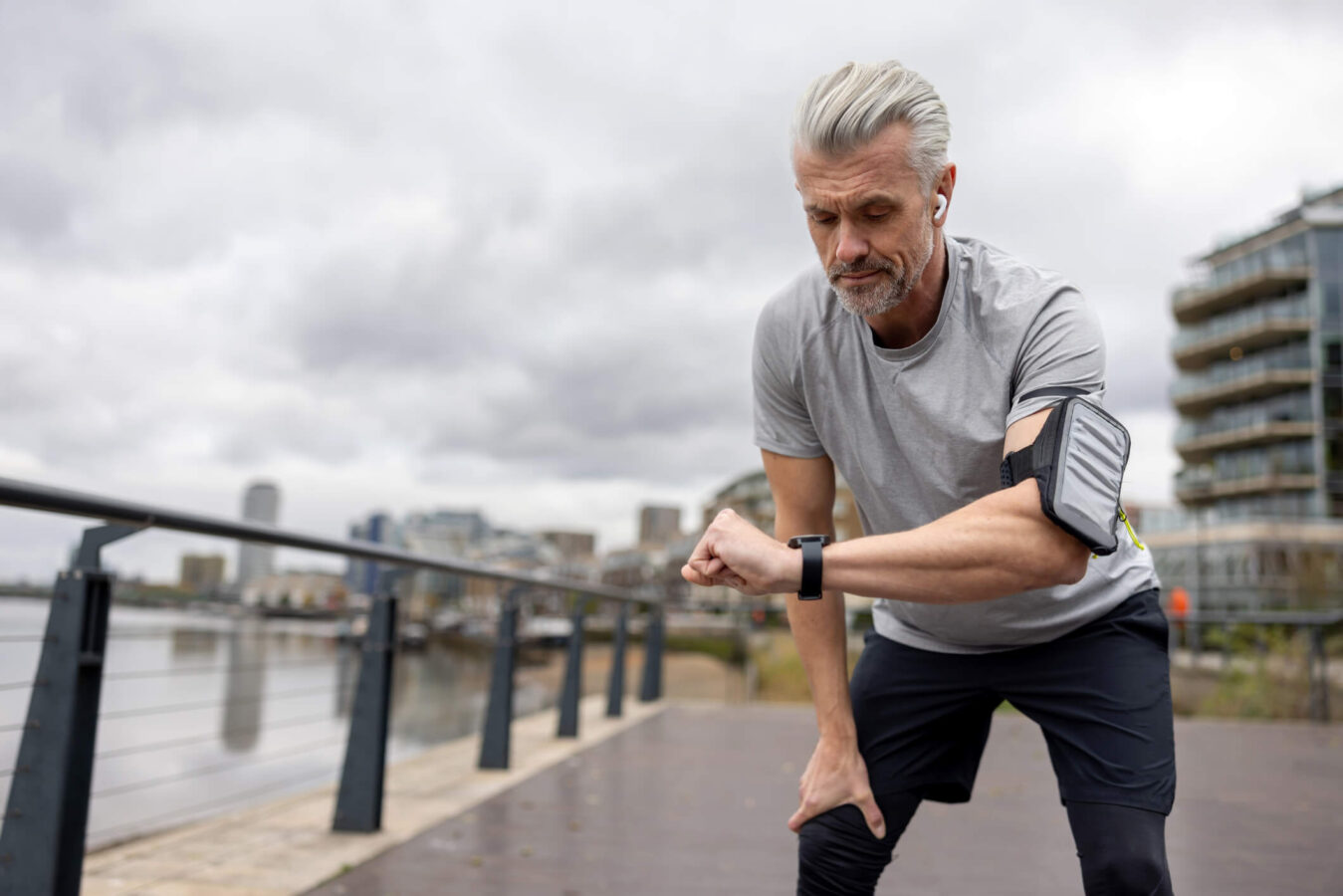
Running gets a bad rap. There is a common misconception that running is bad for the knees or people with knee pain should avoid it. But that is not always the case. In fact, research shows that running actually strengthens the knee joints and reduces the risk of osteoarthritis, a leading cause of knee pain.
We will debunk the most common myths about running and knee pain to help you determine if and when it’s safe to lace up your sneakers and hit the track.
Osteoarthritis (OA) is the most common form of arthritis. It is a degenerative joint disease that affects more than 30 million people in this country. OA degrades cartilage which is the firm, flexible tissue that supports the bones and joints. While OA most commonly affects the hips, lower back, hands, and knees, it can develop in any of the joints of the body.
It was once thought that running damages the cartilage in the knees. Actually, the latest research shows that recreational runners have lower rates (3.5%) of hip or knee OA than sedentary individuals (10.2%). Only elite runners and professional athletes (13.3%) demonstrated higher rates of OA.
Running may in fact, promote healthy cartilage and strengthen knees. It is a safe form of exercise for the knee because it doesn’t involve much turning or twisting. If you do have OA of the knee, you should continue to run, but may consider running less frequently to allow time for your cartilage to recover between runs.
Knee pain has been linked to deficits above and below the knee, including weak muscles in the hips, trunk, thighs, lower leg, and foot; tight muscles in the thighs and lower leg; and the amount of joint mobility in these same areas. These can be corrected through physical therapy to reduce pain for patients who run.
With that said, some runners who experience knee pain may have structural issues or injuries that involve the knee joint. Patellofemoral Pain Syndrome (PFPS), or “runner’s knee” can cause knee pain. Runner’s knee is not a single condition, but a broad term that refers to injuries and structural abnormalities affecting the kneecap (patella.) Possible causes include overuse, muscle weakness, and patellar misalignment.
Runner’s knee pain usually comes on during intense activity that involves bending the knee and sometimes come with cracking or popping of the joint. This condition can often be managed with conservative treatments like rest, ice, and physical therapy.
Always discuss your symptoms with your healthcare provider and physical therapist before you resume training. A complete assessment by a physical therapist will be able to determine whether any of these factors are contributing to your pain. If so, your physical therapist will develop a program to address these deficits and return you to action.
It is never a good idea to push through knee pain. You could potentially make things worse. It is important to address the underlying causes in order to alleviate your pain. A comprehensive physical therapy assessment is the key to finding out what is driving your pain and creating a treatment plan to relieve symptoms and improve your strength and mobility.
There are many ways to decrease impact force on your knees when you run, and these may help decrease knee pain. In general, taking shorter, faster steps and thus increasing your step rate by 5%-10% can reduce the load on your joints and alleviate knee pain.
Switching from a rearfoot strike pattern to a forefoot strike pattern can significantly ease the load on your knee. Improving muscular control of your lower extremity through strengthening can reduces forces on the knee joints when running. Many runners work with physical therapists to treat knee pain and balance and strengthen the structures around the joint for safe and efficient joint function.
Many people assume that pricy, high-end running sneakers are a gimmick to get you to spend more money because all sneakers are the same. That is far from true. While a high price tag doesn’t always guarantee a high-quality running shoe, it is important to wear shoes that fit well and support your feet and legs.
The right running shoe:
When you’re shopping for running shoes, remember there is no single “perfect” brand or shoe for everyone. If you run for recreation or competitively, visit a footwear retailer with highly-trained “fit specialists” who have the technology and expertise to analyze your gait and measure your foot. They will match you with the ideal running shoe for your needs.
Remember that the best running shoe is a comfortable running shoe. Consider your running shoes an investment in your overall health and wellness. A physical therapist that specializes in treating runners can also suggest specific options in footwear to meet your needs.
Don’t let knee pain hold you back from the activities you enjoy. Schedule a physical therapy screening to assess your symptoms and begin a treatment plan to reduce pain and increase your mobility, flexibility, and strength. Visit this link to find a clinic near you.